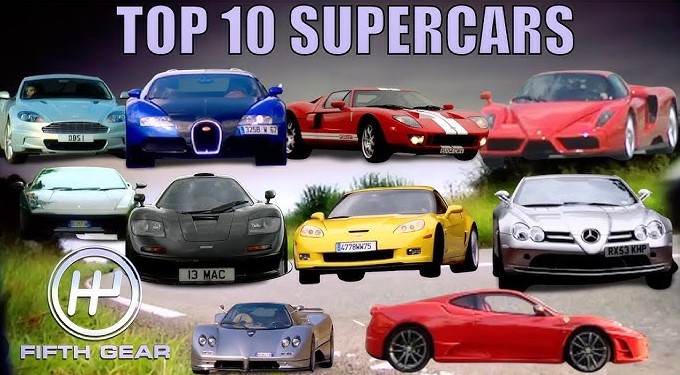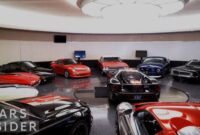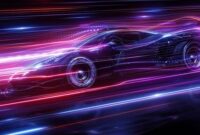Top 10 Most Iconic Supercars of All Time
Introduction (250 words)
Supercars are more than just fast cars—they are cultural touchstones, technological showcases, and emotional experiences on wheels. Some supercars transcend their specs and become legends. Whether it’s due to groundbreaking design, game-changing performance, or cultural impact, these machines have left an indelible mark on the automotive world.
This article counts down the ten most iconic supercars of all time. Each vehicle on this list is a milestone, representing a perfect blend of design, innovation, and performance that helped shape what the supercar is today.
1. Lamborghini Miura (1966) – The Birth of the Supercar (500 words)
Why It’s Iconic:
The Lamborghini Miura is often considered the world’s first true supercar. Its transverse mid-engine layout, swooping curves, and revolutionary design redefined what a performance car could be.
Specs:
• Engine: 3.9L V12
• Horsepower: 345 hp
• Top Speed: 171 mph
• 0–60 mph: 6.3 seconds
Legacy:
Designed by Marcello Gandini, the Miura broke from front-engine tradition and set the template for decades of supercars to follow. It also cemented Lamborghini’s rebellious, flamboyant image.
2. Ferrari F40 (1987) – The Raw Performer (500 words)
Why It’s Iconic:
Built to celebrate Ferrari’s 40th anniversary, the F40 was the last car personally approved by Enzo Ferrari. It was brutal, fast, and unapologetically raw.
Specs:
• Engine: 2.9L Twin-Turbo V8
• Horsepower: 471 hp
• Top Speed: 201 mph
• 0–60 mph: 4.2 seconds
Legacy:
With no power steering, ABS, or traction control, the F40 was a true driver’s car. Its minimalist, aggressive aesthetic made it a poster car for millions.
3. McLaren F1 (1992) – Engineering Masterpiece (500 words)
Why It’s Iconic:
Often cited as the greatest supercar ever made, the McLaren F1 was a no-expense-spared engineering triumph with a focus on purity and speed.
Specs:
• Engine: 6.1L Naturally Aspirated V12 (BMW)
• Horsepower: 618 hp
• Top Speed: 240.1 mph (record holder for over a decade)
• 0–60 mph: 3.2 seconds
Legacy:
The F1 featured a central driving position and gold-lined engine bay. Only 106 units were produced, making it a highly coveted collector’s item.
4. Porsche 911 Turbo (930) (1975) – The People’s Supercar (350 words)
Why It’s Iconic:
The 911 Turbo (Type 930) brought turbocharging to the masses. It was wild, unpredictable, and supremely fast.
Specs:
• Engine: 3.0L Flat-Six Turbocharged
• Horsepower: 256 hp (early models)
• Top Speed: 155 mph
• 0–60 mph: 5.2 seconds
Legacy:
The 930 defined Porsche’s identity and laid the groundwork for decades of performance evolution. It was one of the first supercars to be (somewhat) daily-drivable.
5. Bugatti Veyron (2005) – Breaking the Sound Barrier (400 words)
Why It’s Iconic:
The Bugatti Veyron was the first production car to exceed 250 mph. A marvel of engineering, it combined luxury with ludicrous speed.
Specs:
• Engine: 8.0L W16 Quad-Turbo
• Horsepower: 1,001 hp
• Top Speed: 253 mph
• 0–60 mph: 2.5 seconds
Legacy:
The Veyron proved what was possible with unlimited resources. It redefined the hypercar and set new benchmarks for speed and engineering.
6. Ford GT40 (1964–1969) – The Race Winner (350 words)
Why It’s Iconic:
Built to beat Ferrari at Le Mans, the Ford GT40 succeeded four times in a row, including the legendary 1-2-3 finish in 1966.
Specs (Mk II):
• Engine: 7.0L V8
• Horsepower: 485 hp
• Top Speed: 210 mph
• 0–60 mph: 4.2 seconds
Legacy:
The GT40 is the ultimate American supercar story—David vs. Goliath on the racetrack. Its racing success and cinematic legacy cemented its place in history.
7. Lamborghini Countach (1974) – Design Icon (350 words)
Why It’s Iconic:
The Countach wasn’t just fast—it was outrageous. Its angular, wedge-shaped design and scissor doors defined the visual language of supercars.
Specs:
• Engine: 4.0L–5.2L V12 (various models)
• Horsepower: Up to 455 hp
• Top Speed: 185 mph
• 0–60 mph: 5.6 seconds
Legacy:
This car was pure theater and set the tone for Lamborghini’s bold design ethos. It became the archetype of the ’80s dream car.
8. Acura NSX (1990) – The Supercar You Could Drive Every Day (300 words)
Why It’s Iconic:
Honda shocked the world with the NSX—a supercar with the reliability and usability of a Civic, but with performance to rival Ferrari.
Specs:
• Engine: 3.0L V6 VTEC
• Horsepower: 270 hp
• Top Speed: 168 mph
• 0–60 mph: 5.2 seconds
Legacy:
Developed with input from Ayrton Senna, the NSX pioneered everyday supercar usability. It influenced how performance cars were engineered in the years to come.
9. Pagani Zonda (1999) – Art on Wheels (350 words)
Why It’s Iconic:
Pagani’s first car was more than just fast—it was a work of art. With a bespoke design and Mercedes-AMG V12, the Zonda was handmade excellence.
Specs (Zonda F):
• Engine: 7.3L V12
• Horsepower: 602 hp
• Top Speed: 215 mph
• 0–60 mph: 3.6 seconds
Legacy:
Each Zonda was meticulously crafted, often to customer specification. It elevated the idea of a “boutique” supercar and made Horacio Pagani a legend.
10. Koenigsegg Agera RS (2015) – The Record Breaker (350 words)
Why It’s Iconic:
The Agera RS officially became the fastest production car in the world in 2017, hitting 277.9 mph on a closed Nevada highway.
Specs:
• Engine: 5.0L Twin-Turbo V8
• Horsepower: 1,160 hp
• Top Speed: 278 mph (recorded)
• 0–60 mph: 2.9 seconds
Legacy:
Sweden’s Koenigsegg emerged as a disruptor, using cutting-edge tech like carbon fiber wheels and active aero to dominate traditional supercar names.
Honorable Mentions (200 words)
While only ten could make the main list, these models also deserve recognition:
• Ferrari 288 GTO: The father of the modern Ferrari supercar.
• Lexus LFA: A technological tour de force with one of the best-sounding V10s ever made.
• Chevrolet Corvette ZR1 (C6/C7): Proof that American engineering can stand toe-to-toe with Europe.
• Tesla Roadster (2nd Gen – Upcoming): Potentially the first electric supercar to reach 250+ mph.
Conclusion (250 words)
Iconic supercars aren’t defined by just numbers—they’re defined by emotion, innovation, and influence. Whether it’s the Miura starting it all, the F40’s purity, or the Agera RS’s insane speed, these machines have written chapters in automotive history.
As we move into the electric age, the spirit of the supercar lives on in new forms. While the sound may change, the thrill, the style, and the ambition remain eternal.
Supercars remind us of what humans can achieve when imagination, engineering, and passion collide. These ten legends—and those to come—will continue to inspire dreamers for generations.



